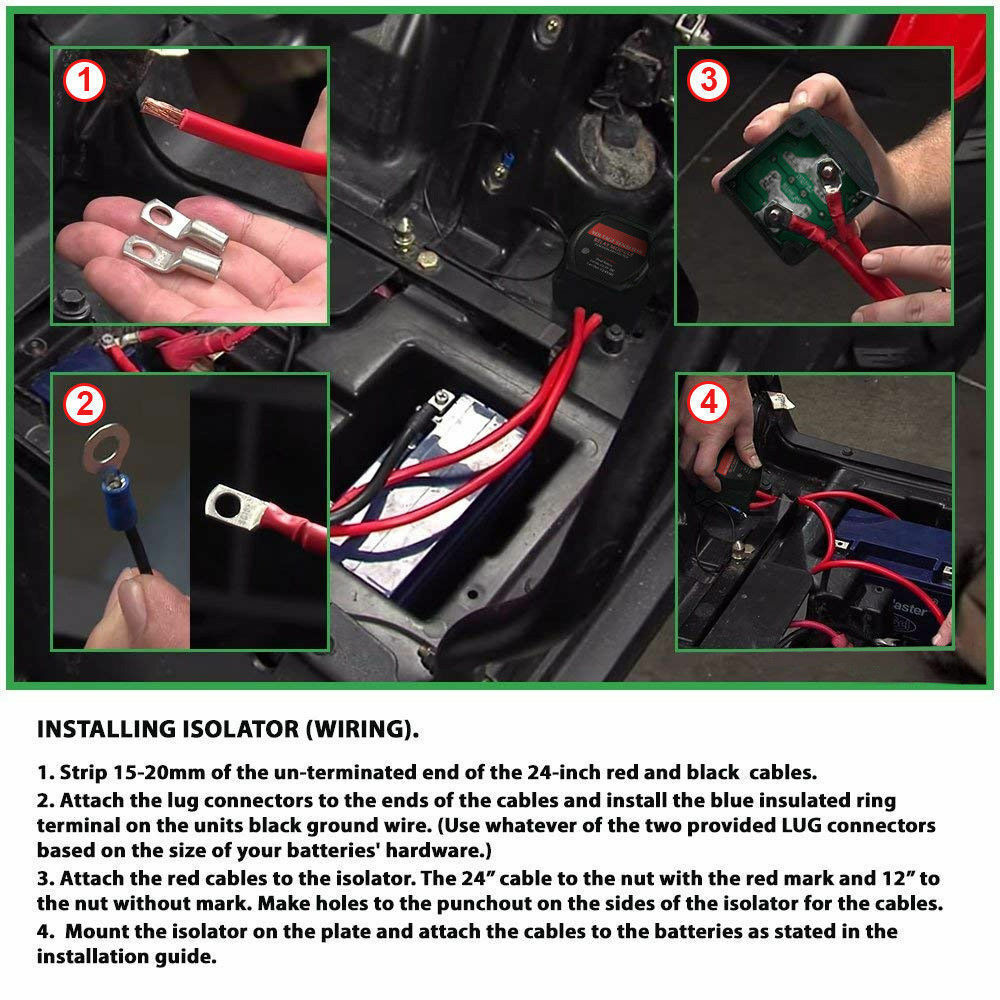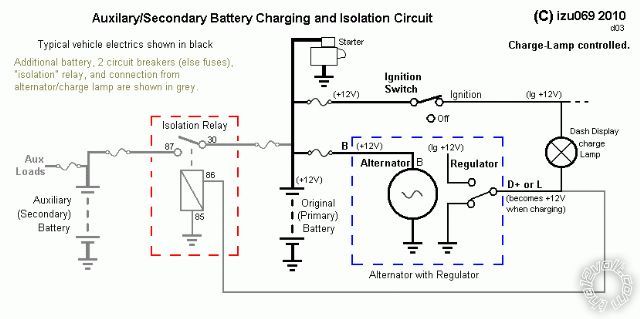

We will assume you have lead-acid batteries (either AGM or wet cell), which have a fully charged resting voltage of about 12.7 volts.


BATTERY ISOLATOR RELAY DIAGRAM HOW TO
Since our Class B has an isolator, we will describe how to find out if the isolator is the source of your charging problem. If you find you have a problem with either your house or vehicle battery getting charged, it is important to check your isolator or separator. Unlike an isolator, a separator will draw some current while idle. In addition to charging both batteries from the alternator, the battery separator allows both house and vehicle batteries to be charged when you are plugged into shore power. However this article will not discus how to test a separator although the process is similar. Shown at the right is a battery separator. The job of these devices is to charge both house battery and the engine battery, yet to keep the batteries separate or isolated from each other so you will not deplete your engine battery if you run your house battery too low (and vise versa). Alternator power flows normally through an isolator or a separator. Your alternator will charge both your engine battery and your house battery. The easiest and fastest way to charge your battery is to drive. If you camp without electrical hookups it is important that you keep your batteries in good condition and that they get charged. Battery Separatorīatteries are vital to RVers. Or you can spend a lot more on a more versatile multimeter. A basic multimeter from Harbor Freight can do what you need for $5.99.

Your will need a multimeter (sometimes called a VOM or Volt Ohm Meter). It is important to be able to do some basic troubleshooting yourself to fix the problem. Note that even if you have two (or more) house batteries we will use the single term battery in this article. Several technologies have been used to achieve control of DC in this manner: silicon rectifier packages, Schottky rectifier packages, MOSFET rectifier packages, and conventional mechanical relays.Nearly every motorhome owner will at sometime experience a charging problem with their house battery. Isolators are also used in vehicles with large, high-power car stereos and off road vehicles to accommodate high current loads such as a recovery winch. A battery isolator helps to ensure that the starting battery has sufficient power to start the engine and recharge the batteries if, for example, loads on the auxiliary battery (e.g., refrigerator or navigation lights) cause it to be drained, or if an auxiliary battery fails. Uses īattery isolators are commonly used on recreational vehicles, boats, utility vehicles, airplanes, and large trucks where one battery is dedicated to starting and running the engine and another battery or batteries run accessory loads (e.g., winches, radar, instruments, etc.). The disadvantage to an isolator is added cost and complexity, and if a diode-type isolator is used (which is very common) there is additional voltage drop in the circuit between the charging source and the batteries. This is beneficial because a weak or dead battery will drain the charge from a strong battery if both are connected directly together.


 0 kommentar(er)
0 kommentar(er)
